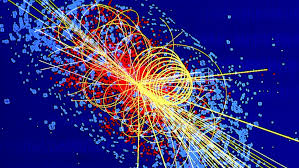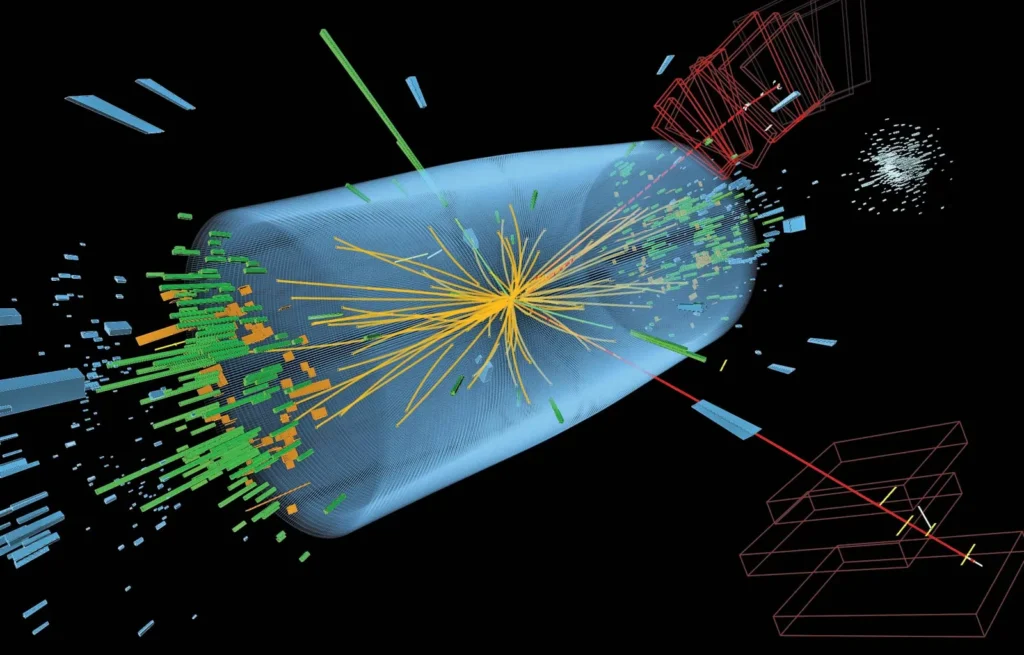The Higgs boson is a fundamental particle in particle physics, famously discovered in 2012 at the Large Hadron Collider (LHC) at CERN. Its existence was predicted by the Standard Model of particle physics, which describes the fundamental particles and their interactions.
The Higgs boson plays a crucial role in the mechanism that gives particles their mass. According to the theory proposed by Peter Higgs and others in the 1960s, the universe is permeated by a field called the Higgs field. Particles interact with this field, and the way they interact determines their mass. The Higgs boson is the quantum excitation of this field.
The discovery of the Higgs boson was a major milestone in particle physics, confirming a key aspect of the Standard Model and providing insight into the origin of mass in the universe.
How was the Higgs boson discovered?

The discovery of the Higgs boson was a monumental achievement in particle physics, and it was made possible through the collaborative efforts of thousands of scientists working at the Large Hadron Collider (LHC) at CERN (the European Organization for Nuclear Research) in Switzerland.
The search for the Higgs boson began decades before its discovery. In the 1960s, theoretical physicist Peter Higgs and others proposed the existence of a field, now known as the Higgs field, which permeates the universe and gives particles their mass. According to this theory, particles interact with the Higgs field, and those interactions give them mass. The particle associated with the Higgs field is the Higgs boson.
The LHC, which began operations in 2008, was specifically designed to search for the Higgs boson and explore other fundamental questions in particle physics. By colliding protons at extremely high energies, physicists hoped to produce the elusive Higgs boson and detect its signature.
On July 4, 2012, CERN announced the discovery of a new particle that was consistent with the Higgs boson. The discovery was based on data collected by two large experiments at the LHC: ATLAS and CMS. Both experiments observed a particle with properties consistent with those predicted for the Higgs boson, including its mass and decay modes.
The discovery of the Higgs boson confirmed the existence of the Higgs field and provided a crucial piece of evidence supporting the Standard Model of particle physics, which describes the fundamental particles and forces of nature. It also opened up new avenues for research into the nature of mass and the fundamental forces of the universe.
What is the role of the Higgs boson in particle physics?

The Higgs boson plays a central role in particle physics, primarily through its interaction with other particles via the Higgs field. Here are some key aspects of the Higgs boson’s role:
Origin of Mass
The concept of mass was previously a mystery in particle physics. The Higgs mechanism provides an elegant explanation for how particles acquire mass. It posits that all particles are initially massless but interact with the Higgs field, analogous to how objects moving through a viscous fluid experience resistance.
This interaction endows particles with mass, proportional to the strength of their interaction with the Higgs field.
The Higgs field permeates the entire universe, and particles moving through it experience varying degrees of resistance, leading to their diverse masses.
For instance, particles like quarks and electrons interact strongly with the Higgs field, resulting in relatively large masses, while particles like photons, which do not interact with the Higgs field, remain massless.
Electroweak Symmetry Breaking
In the early universe, before the process of electroweak symmetry breaking occurred, the electromagnetic force and the weak nuclear force were unified into a single force described by the electroweak theory.
As the universe cooled after the Big Bang, the Higgs field settled into its lowest-energy state, breaking the electroweak symmetry. This caused the electromagnetic force and the weak force to become distinct, giving rise to the W and Z bosons’ masses while leaving the photon massless.
Electroweak symmetry breaking is a pivotal event in the history of the universe, leading to the formation of distinct fundamental forces and the emergence of the particle masses we observe today.
Validation of the Standard Model
The discovery of the Higgs boson was a triumph for the Standard Model of particle physics, which describes the fundamental particles of matter and their interactions. It provided experimental confirmation of the Higgs mechanism and completed the particle content of the Standard Model.
Despite its remarkable success, the Standard Model is not a complete theory of particle physics, as it does not incorporate gravity or explain phenomena such as dark matter and dark energy.
However, the discovery of the Higgs boson validated many of the model’s predictions and provided a crucial framework for further exploration.
Particle Decays
The Higgs boson can decay into lighter particles, such as pairs of photons, W and Z bosons, or fermions like quarks and leptons, with specific probabilities dictated by the Standard Model.
By studying the rates and types of Higgs boson decays, physicists can precisely measure its mass, spin, and other properties. Any deviations from the predicted decay patterns could indicate the presence of new physics beyond the Standard Model.
Understanding the decay processes of the Higgs boson is essential for unraveling its nature and exploring the fundamental forces and particles that govern the universe.
How has the discovery of the Higgs boson impacted scientific research?

The discovery of the Higgs boson has had a profound impact on scientific research in several ways:
- Big Discovery: Scientists found a tiny particle called the Higgs boson, which helps explain how things in the universe are made and work.
- Why Things Have Weight: The Higgs boson helps us understand why some things are heavy and some are light. It’s like knowing why some backpacks are heavier than others.
- Finding More Secrets: Even though we found the Higgs boson, there’s still a lot more to discover about the universe, like finding hidden treasures.
- Super Machines and Smart People: Discovering the Higgs boson needed really cool machines and smart scientists working together, like a big team solving puzzles.
- Making People Curious: The discovery of the Higgs boson made people excited about science and wanting to learn more about how the universe works. It’s like finding a cool secret that makes you want to explore more.
Final Words
The Higgs boson is a tiny particle that scientists found in 2012. It helps us understand why things have mass, like why some objects are heavy and others are light. Finding the Higgs boson was a big achievement in science, and it opens up new opportunities for us to learn more about the world around us.
